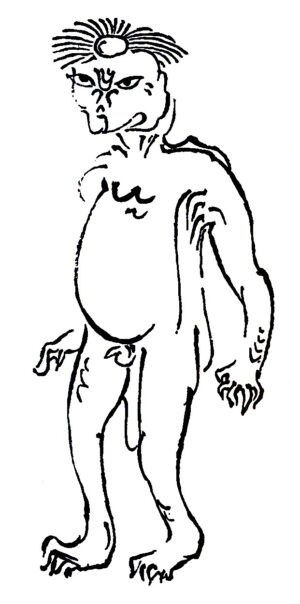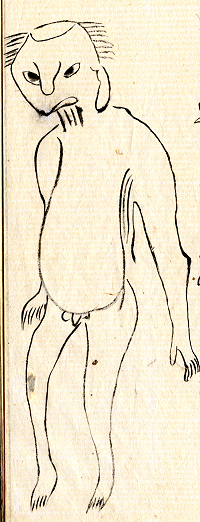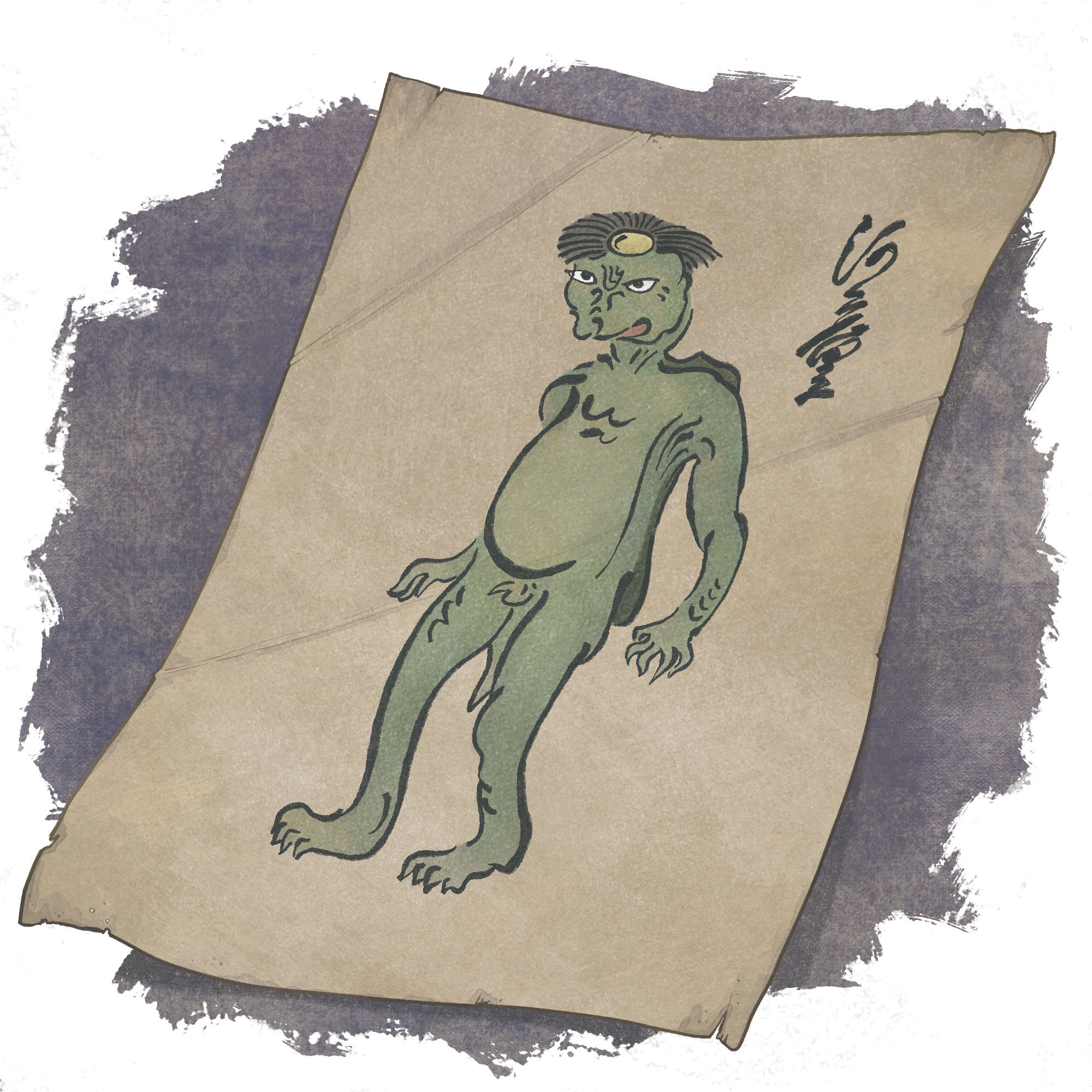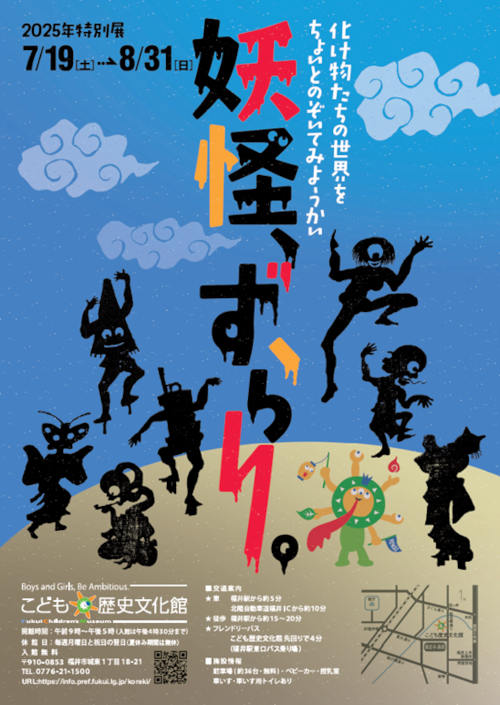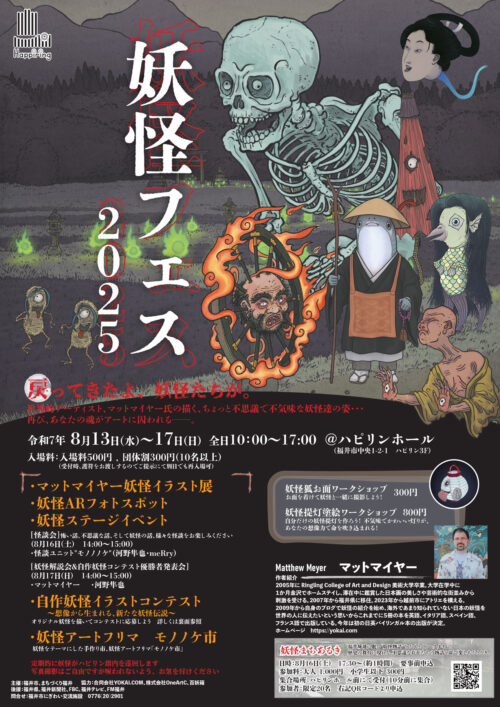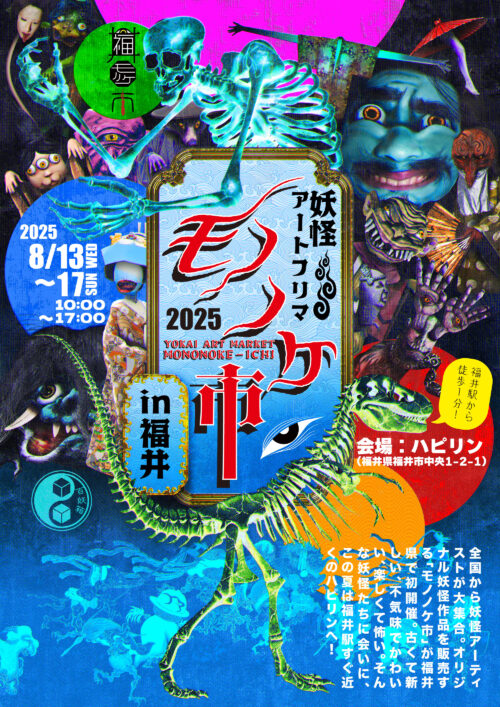Hello readers!
Today is October 1st, and that means two things:
1) My Kickstarter is live! Check it out here, and remember that if you pledge today you get a free metal yokai pin badge as an early bird reward! We’ve already had an amazing launch day so far, so thank you to everyone who has already joined!
2) It’s time for A-Yokai-A-Day, my annual tradition going back to 2009, where I paint and introduce one yokai every day to celebrate Halloween month (the best month of the year)!
If you’re new to A-Yokai-A-Day, you can read the archives here on my blog. For the past three years, I have been translating Shokoku hyakumonogatari (One Hundred Stories from Various Provinces), an edo period collection of 100 ghost stories, during A-Yokai-A-Day. You can catch yourself up and read the first 93 stories here: part 1, part 2, part 3.
If you did the math, you’ll know that there are only 7 stories left in Shokoku hyakumonogatari. Once those are done, I will move on to sharing selected stories from Mimibukuro (Ear Bag). Mimibukuro is a collection of stories from all around Japan heard by a samurai who was working on Sado Island in the Edo period. He collected 1000 stories in many volumes. Not all of them are ghost/yokai stories, but many are, and I will be picking out tales from those. If you enjoy these stories, remember there are years of A-Yokai-A-Day to comb through, so please check them out!
So! Before we move on to today’s story and the start of A-Yokai-A-Day, I will do one last Kickstarter plug! If you like the style of stories found in A-Yokai-A-Day, then you will absolutely want to check out my Kickstarter! Unlike my previous 5 books, which are all encyclopedic in style, Echizen-Wakasa Kidan is a collection of translated tales, just like Shokoku hyakumonogatari. Backers will get to have their name printed in the book as a thank you for making this project come to life. And we have some amazing and unique traditional Japanese crafts on offer as well. I hope you’ll join!
Ok, now on to today’s story!
How Kurita Saemon-no-suke’s Wife Died and Came Back to Wrestle
In the household of the lord of Kaga lived a samurai named Kurita Saemon-no-suke who held a fief of 800 koku. His wife was the daughter of another retainer within the same household and renowned for her beauty, however, she suffered from tuberculosis and died. Saemon-no-suke was overcome with grief, and lived for three years without taking a new wife, but then his relatives came by and strongly pressured him to remarry. They introduced him to the seventeen year old daughter of Nitta Rokurōbei from Owari, a samurai of 500 koku.
Thirty days passed, and Saemon-no-suke was placed on watch duty at the castle. His new wife was reclining by the kotatsu when an eighteen or nineteen year old girl wearing a white kimono with circular patterns on it and a silk kerchief approached her bed. The girl said to the wife, “You there, what are you doing here?”
The wife was surprised, and she replied, “Who are you to speak to me in such a manner?”
“I am the lady of this house,” replied the girl.
Hearing this, the wife replied, “I know nothing about that, for I was only recently married into this house. Your anger is quite justified. However, Lord Saemon-no-suke’s actions are unbecoming of a samurai. To have a wife as beautiful as you and then to take another wife is extremely infuriating. I believe Lord Saemon-no-suke will return early tomorrow morning, however, as we are both women, please allow me enough time to speak with him on this matter.”
“Take as much time as you need, and then return to your family. Well now, I am satisfied,” said the woman. Then she turned to leave and vanished into thin air.
When Saemon-no-suke returned from the castle, his wife said, “Please grant me a divorce.”
“What would make you say this all of a sudden! Tell me what happened,” he said.
“My lord, you have done something unbecoming of a samurai. You married me while you already had a lawful wife. It is such a dirty thing to do! Please grant me a divorce this instant,” she begged.
Saemon-no-suke replied, “I have no idea what you are talking about. As I told you when we first met, my wife died three years ago, and since then I have had no other wife except for you!”
He swore to this firmly. Then, his wife told him everything about the woman who appeared the previous night.
Hearing this, Saemon-no-suke said, “Well now, that must have been the ghost of my wife who died three years ago. There can be no other explanation. Upon this I will stake my life. Therefore, you must stay here. I will not grant you a divorce.”
His word was final, and the wife had no choice but to stay.
Later, on a night when Saemon-no-suke was watching the castle again, the first wife returned and said, “Well, well. Even though you made a firm promise before, you have not returned to your family. How bitterly I resent you!”
The wife replied, “My lady, you are no longer part of this world. Why do you remain so deeply attached to this world? You must return to your own world.”
The first wife replied, “If you refuse to go back to your family, then let us wrestle for it. If you lose, you will return to your family. If I lose, I will never come here again.”
No sooner had she spoken than she leapt forward. The wife said, “I’m ready!” and met her challenge. As they wrestled, pushing and shoving, Saemon-no-suke returned, and the ghost vanished into thin air.
After that, when Saemon-no-suke was on watch duty, the ghost came to wrestle the wife five times. The wife was deeply distressed by this. She began to lose weight and grew thin, then she fell ill and before long she died.
In her final moments she turned to Saemon-no-suke and said, “The ghost who first came to me in secret, and then appeared over and over again to torment me… I was so afraid of it, but I resolved to endure, because I pledged my life to you upon our marriage. Now I die like this. Please give me a nice funeral. Don’t tell my parents about this.”
Saying this, she passed away. Saemon-no-suke grieved for her, and held a funeral. He wrote a farewell letter and sent it to her parents, then he became a monk, and traveled throughout the country practicing Buddhist teachings.

